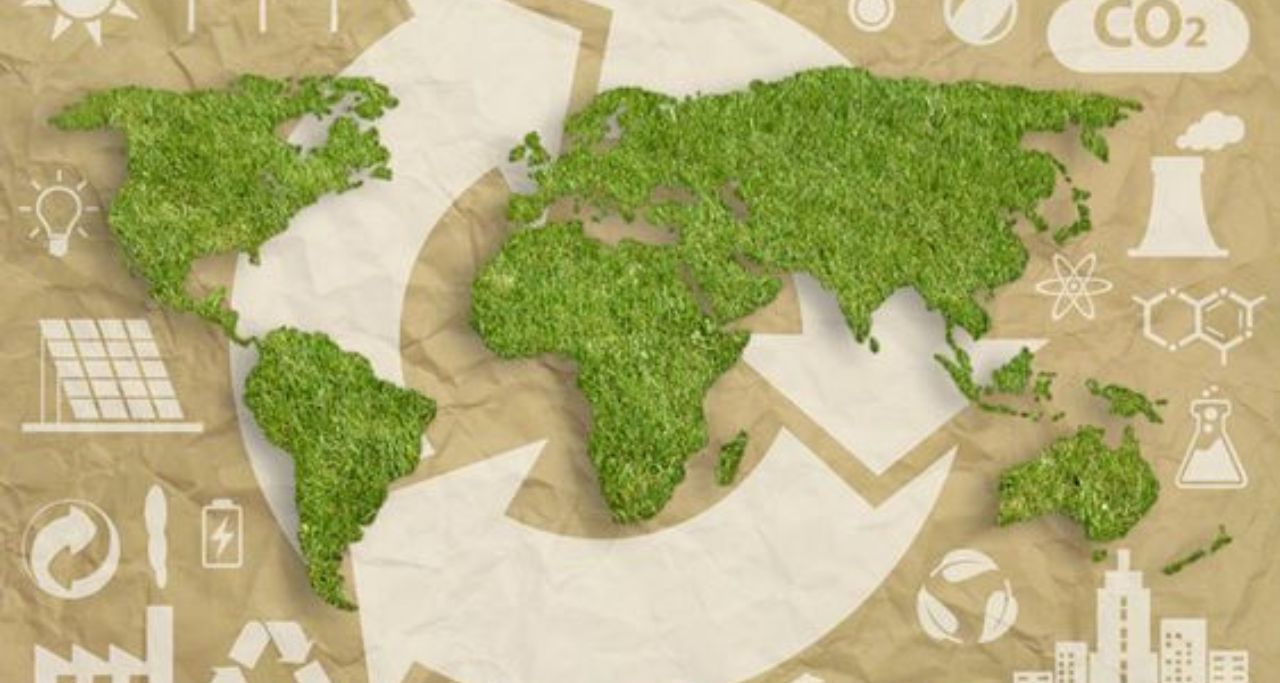Reviewing the Market Trends and Future Prospects of Renewable Polyethylene
Renewable polyethylene is gaining significant attention as a sustainable alternative to traditional plastics. In this review, we delve into the market trends and future prospects of renewable polyethylene, exploring its potential to reshape the materials industry. With "renewable polyethylene" appearing three times, we analyze its growing demand, expanding applications, and advancements in production techniques.
We also discuss key factors driving its adoption, including environmental concerns and regulatory initiatives. By examining market dynamics and assessing the challenges and opportunities, this review provides valuable insights into the transformative role of renewable polyethylene in creating a more sustainable and circular economy.
Market Trends of Renewable Polyethylene
The demand for sustainable materials has propelled the adoption of renewable polyethylene across various industries.The current market size of renewable polyethylene has reached significant levels and is projected to witness a remarkable growth rate in the coming years. As businesses and consumers increasingly prioritize sustainability, the demand for renewable polyethylene continues to escalate. The market's growth rate is expected to remain robust in the foreseeable future, fueled by environmental concerns and regulatory initiatives aimed at reducing carbon footprint.

Several factors contribute to the escalating demand for renewable polyethylene. Firstly, the shift towards environmentally friendly alternatives in response to climate change and plastic pollution is propelling the adoption of renewable polyethylene. Additionally, stringent government regulations and sustainability targets are incentivizing businesses to embrace sustainable materials. The rising consumer awareness of eco-friendly products and the circular economy further contribute to the growing demand. Besides, the packaging and automotive sectors are playing a vital role in shaping the market dynamics by adopting renewable polyethylene solutions.
When analyzing the market trends, it is essential to consider both regional and global perspectives. Developed economies, such as North America and Europe, are leading the adoption of renewable polyethylene, owing to their strong sustainability initiatives and stringent regulations. However, emerging markets in Asia Pacific and Latin America are also witnessing a surge in demand, driven by increasing awareness and government support.
The global market for renewable polyethylene showcases a promising outlook, with numerous opportunities for industry players. As companies strive to meet sustainability goals and cater to the growing demand for eco-friendly products, the market is becoming increasingly competitive. Players are investing in research and development to enhance the performance characteristics of renewable polyethylene and gain a competitive edge.
Future Prospects and Outlook
Renewable polyethylene holds promising future prospects, driven by increasing environmental consciousness and the need for sustainable materials. Here, we delve into the growth projections, emerging trends, and potential impact of renewable polyethylene on a circular economy.

Growth Projections and Forecasts
Industry reports indicate a positive growth trajectory for renewable polyethylene, with forecasts suggesting a substantial increase in market demand over the coming years. The compound annual growth rate (CAGR) is projected to be impressive, driven by factors such as stringent environmental regulations, consumer preference for eco-friendly products, and advancements in renewable polyethylene production technologies. The market expansion is expected to create new opportunities for renewable polyethylene manufacturers and suppliers.
Emerging Trends and Disruptive Factors
Several emerging trends are shaping the renewable polyethylene market. One notable trend is the integration of renewable polyethylene into the existing plastic value chain, enabling a smoother transition towards sustainability. Additionally, advancements in feedstock sourcing, such as the use of bio-based materials, are driving the development of more sustainable and renewable polyethylene options.
Especially, innovations in production processes are enhancing the performance and versatility of renewable polyethylene, making it a viable alternative to traditional petroleum-based plastics. Disruptive factors in the market include the increasing focus on closed-loop and circular economy models. Renewable polyethylene's potential to be recycled and reused aligns with circular economy principles, offering a sustainable solution to the plastic waste challenge.
Potential Impact on a Circular Economy
Renewable polyethylene has the potential to make a significant impact on advancing the circular economy. By replacing traditional petroleum-based polyethylene with renewable alternatives, it reduces dependence on fossil fuels and contributes to the creation of a closed-loop system. The recyclability and biodegradability of renewable polyethylene further support the circular economy concept by reducing waste and promoting resource efficiency.
As renewable polyethylene continues to gain traction, its integration into the circular economy will play a crucial role in achieving sustainable development goals and fostering a more environmentally friendly future.
Applications and Industries
Renewable polyethylene is gaining traction across various industries as a sustainable alternative to traditional plastics. In this section, we provide an overview of the key industries embracing renewable polyethylene, analyze its applications in packaging, automotive, textiles, and more, and highlight successful implementation through case studies, including the renowned company Airx.

Overview of Key Industries
Renewable polyethylene has found adoption in diverse industries that prioritize sustainability. These include packaging, automotive, textiles, consumer goods, construction, and more. The versatility of renewable polyethylene makes it an attractive choice for manufacturers seeking eco-friendly alternatives.
Analysis of Applications
Airx, a leading company in sustainable materials, has successfully implemented renewable polyethylene in various applications. They have developed innovative packaging solutions using renewable polyethylene, reducing plastic waste and promoting a circular economy. Airx's eco-friendly products have gained recognition and market acceptance, highlighting the practicality and viability of renewable polyethylene in real-world scenarios. Several AirX applications have been produced and put into practice:
Packaging Industry: The packaging industry is one of the major adopters of renewable polyethylene. It is used in the production of flexible films, bags, containers, and other packaging materials. Renewable polyethylene provides similar performance and functionality as traditional polyethylene but with the added advantage of being derived from renewable resources, reducing carbon emissions, and promoting a circular economy.
Automotive Sector: The automotive industry is increasingly incorporating renewable polyethylene into its manufacturing processes. It finds applications in interior components, such as door panels, dashboard trims, and seat fabrics. The use of renewable polyethylene helps reduce the environmental impact of vehicle production, enhance sustainability credentials, and meet regulatory requirements.
Construction and Building Materials: Renewable polyethylene is also finding its way into the construction sector. It is used in applications such as pipes, profiles, insulation materials, and roofing membranes. With its durability, versatility, and sustainable attributes, renewable polyethylene contributes to the development of more environmentally friendly and energy-efficient buildings.
Textile and Apparel: The textile and apparel industry is exploring renewable polyethylene as a substitute for petroleum-based materials in fabric production. Renewable polyethylene fibers can be used in a variety of applications, including clothing, sportswear, and home textiles. This offers the advantage of reducing reliance on fossil fuels and addressing the environmental impact of the textile industry.
These case studies demonstrate the successful integration of renewable polyethylene in different industries, showcasing the positive impact it has on sustainability goals and consumer preferences. By partnering with companies like Airx, businesses can leverage the advantages of renewable polyethylene to meet market demands and drive positive environmental change.
Contact us
AirX is the world’s first carbon-negative bio-material made from coffee grounds manufacturer.
We specialize in producing bio-based composites using recycled carbohydrates derived from by-products such as coffee grounds, coconut husk, husk, and bamboo. Our goal is to promote sustainability through the use of eco-friendly materials.
We are always here to help and provide the best service possible. If you have any questions or would like to receive advice and feedback directly from our sales staff, please do not hesitate to contact us. You can reach us through:
- Whatsapp: +84 969 742 950
- Email: [email protected]
We look forward to hearing from you!

